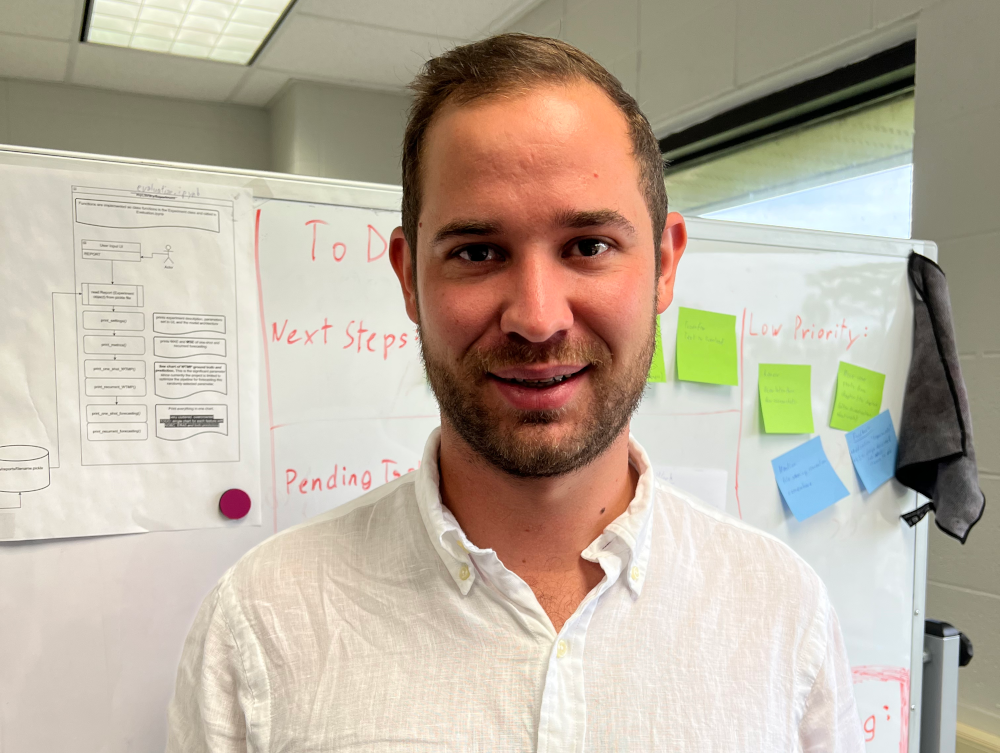Visiting Graz Technical University M.S. student Elias Sandner completes his visit to GulfSCEI
Published Jul. 28, 2023
Editor's Note: At GulfSCEI, we have the fortune to work with a wide variety of students and scholars of different backgrounds. Through July 2023, Graz Technical University Graduate Student Elias Sander completed an internship with us. Below he shares information on his work done while with us and reflects on the experience of being part of GulfSCEI.

My journey from the Technical University of Graz in Austria to the Joseph Canizaro and James Livingston Gulf States Center for Environmental Informatics (GulfSCEI) in New Orleans was nothing short of enlightening. Working on my master thesis titled "Refining Ocean Buoy Forecasting with Physics-Informed Regularization through Ocean Models" at the GulfSCEI center, I found myself immersed in the intricate world of numerical weather prediction, deep learning, physics-informed neural networks, and time series forecasting.
What truly stands out in this experience was the freedom I was accorded to guide the direction of my research based on my interests. It provided me with an avenue to delve into how physics-informed neural networks offer a refreshing way to fuse physical laws with data-driven strategies. While integrating partial differential equations into a neural network is intricate and demands extensive domain knowledge, we innovated by weaving simulated data into the neural network's training process. Our focus was sharpened on forecasting using data from ocean buoy observations in synergy with simulated data from the European Centre for Medium-Range Weather Forecasts.
“Navigating the deep waters of research at GulfSCEI, I was anchored by collaboration, mentorship, and shared purpose. To the winds of future endeavors guiding us back together.”
During my internship, I not only worked on theoretical aspects but also developed a tangible toolkit designed for versatility. This toolkit allows users to construct datasets, evaluate any neural network in the realm of time series forecasting, and produce comprehensive reports of their performance on the created datasets. It's adaptable enough to be incorporated in myriad related research projects. Two pivotal methodologies we developed for dataset creation are the Multi Location Model, hypothesizing that neural networks can unearth patterns like ocean currents to enhance forecast accuracy, and the Single Station Unified Model, which amalgamates several station instances to produce a vast record count.
Central to my growth during this period was the unwavering support from the GulfSCEI center. I extend my heartfelt gratitude to Austin, a Doctoral DoD SMART Fellow, and Dr. M. Abdelguerfi, the director of GulfSCEI, both of whom steered my academic pursuits in the most constructive directions. Their knowledge and insights were the foundation upon which my project thrived.
I am truly grateful for the financial support extended to me by the Marshall Plan foundation and the GulfSCEI center, ensuring that my research pursuit in New Orleans was seamless. The collaboration between the GulfSCEI center and the Technical University of Graz has been extremely enriching, and I fervently hope that this association only grows stronger in the future, opening avenues for more joint research projects.

